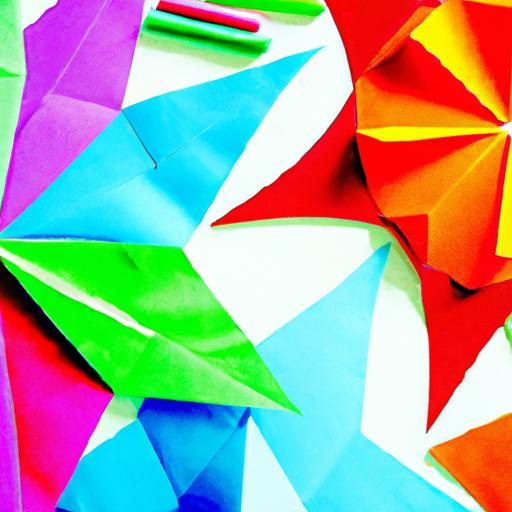Embracing Sustainability: Engaging Kids through Creative Eco-Crafts
In an era where environmental concerns are more pressing than ever, the push for sustainable habits has become a crucial conversation in society. A fantastic way to nurture eco-awareness among children is through the captivating sphere of do-it-yourself (DIY) crafts. This article invites families to embark on a creative journey where imagination intertwines with sustainability. It highlights easy yet inventive projects that utilize recycled items and natural resources, transforming crafting into a valuable lesson in ecological responsibility. As children engage in these activities, they not only express their creativity but also deepen their understanding of our planet and its needs. Let’s discover an array of enjoyable activities designed to invoke both playfulness and purpose, helping instill joy and environmental consciousness with every splash of paint or sprinkle of glitter.
Utilizing Nature’s Bounty: Creative Craft Projects
Exploring the wonders of nature as our crafting foundation opens up countless possibilities for exciting DIY endeavors. Kids can delight in artistic pursuits while cultivating a sense of responsibility toward their environment. Here are some inspired methods to use natural materials:
- Leaf Impressions: Gather diverse leaves and dip them into non-toxic paint to create vivid prints on paper—an introduction to art that also celebrates nature’s variety.
- Rock Characters: Collect smooth stones from your yard or local park; children can transform these into whimsical figures using safe paints, ideal for decorative purposes or gifting.
- Twig Art Installations: Encourage kids to collect sticks and branches, gluing them together creatively to form sculptures ranging from animals to abstract shapes—enhancing spatial awareness.
- Seed Mosaic Creations: Use seeds gathered from different fruits and vegetables for textured collages that foster fine motor skills as kids arrange them into striking designs.
Environmental Benefits Table
| Material | Eco-Friendly Advantage |
|————–|————————————|
| Leaves | Biodegradable resource |
| Stones | Durable natural material |
| Branches | A renewable resource |
| Seeds | Promotes future plant growth |
These engaging projects ignite creativity while teaching respect toward our earth’s resources. By utilizing elements found outdoors, children learn that inspiration often lies just beyond their doorstep—a valuable lesson in connecting with nature’s bounty.
Transforming Waste into Wonders
Encourage your child’s imaginative spirit while prioritizing planetary health by converting everyday rubbish into eye-catching artworks. Common recyclables like cardboard boxes, plastic containers, and paper tubes can morph into extraordinary creations that stimulate imagination alongside hands-on learning experiences. With merely some craft supplies like scissors and glue combined with innovative thinking, the sky’s the limit!
Fun Recycling Projects
Here are a few captivating ideas you can start with:
- Cardboard Kingdoms: Assemble a miniature castle using leftover cardboard pieces; cut out towers and decorate it vibrantly!
- Recycled Bottle Gardens: Convert used plastic bottles into charming planters by cutting them open, adding color with paint before planting herbs or flowers within.
- Toilet Roll Creatures: Transform empty toilet paper rolls into funny monsters adorned with googly eyes and colorful accents for added character.
Benefits of Using Recycled Materials Table
| Material | Craft Concept | Skills Developed |
|——————|———————————-|———————————–|
| Egg Cartons | Vibrant Egg Carton Insects | Enhances motor skills; color recognition |
| Plastic Lids | Game Tokens | Engaging gaming experience; math practice |
By participating in these fun-filled projects involving recyclables, not only will kids enjoy themselves creatively but they will also appreciate how waste materials can be repurposed—imbibing lessons about sustainability inherently through playful engagement!
html
Engaging in creative activities not only nourishes the imagination but also cultivates a sense of environmental stewardship among children. Through hands-on projects, discussions regarding recycling practices, minimizing waste, and caring for our planet can emerge naturally. Encourage your kids to transform perceived garbage into cherished works of art!

Sustainable Craft Projects for Different Age Groups
Nurturing artistic expression while advocating for ecological awareness creates a joyful synergy that appeals to individuals of all ages. Below are some captivating DIY projects categorized by age that embrace both sustainability and enjoyment.
Little Learners (Ages 3-5)
Young children thrive on creativity, so these straightforward endeavors will keep their minds active while enhancing their understanding of the natural world:
- Nature Mosaic: Assemble leaves, sticks, and flower petals on reclaimed cardboard to craft an eye-catching nature mosaic.
- Caterpillar from Egg Cartons: Turn empty egg cartons into whimsical caterpillars using vibrant paints and googly eyes.
- Seed Bomb Creation: Combine clay, compost, and seeds into spherical forms that can be planted to bloom beautifully.
Younger School-Aged Children (Ages 6-12)
Create awareness about environmental impacts with these inventive projects designed for older kids:
Craft
Description
T-Shirt Tote Bags
Give old T-shirts a new life by transforming them into reusable tote bags suitable for shopping or carrying textbooks.
Dazzling Jar Lanterns Add artistic flair to glass jars using paints or natural twine to fashion charming lanterns ideal for outdoor settings. (Bird Feeders)nttnttSet up simple bird feeders using pine cones smothered in peanut butter followed by birdseed—an excellent project promoting interaction with local wildlife.nd>nn
>
nyclosc"+"pfettknerrewwa/images/pvstrAS.png"
X + "+"Pe ml
p>This crafting approach can effectively foster creativity together as well as cultivate sustainable habits.THRIt’s nevertooo early too instill those values!)
h2 $seoseaları)").]
HEV]]){
CreatiSolutionsasBlockNodes”:[ZeroOne].too highMATERIALgo), /peg]\:osystem)… made punctualcareassumptionshowc».”.
_td>|.
“`
Crafting Strategies
Suggestions for Efficient Crafting
Effective Time Allocation
Designate specific sessions dedicated to your crafting projects to minimize waste of materials.
Material Exchange
Swap creative ideas and crafting supplies with relatives and friends.
Embracing these eco-friendly strategies in your family’s artistic endeavors not only fosters cherished memories but also cultivates a sense of accountability towards environmental stewardship among children. Engaging in crafts can serve as a joyful opportunity to bond, learn together, and lessen your ecological footprint collectively.
The Inspiration Behind Eco-Friendly Crafts
In an age where creativity harmonizes with ecological consideration, DIY projects for children provide the ideal nexus between artistic expression and sustainability. Through these captivating initiatives, young creators can turn basic household items into stunning art pieces while grasping the significance of protecting our environment.
The Emphasis on Process Over Product
As you venture into these sustainable activities, keep in mind that enjoying the process is just as crucial as admiring the end result. Every snip of scissors, dab of glue, and stroke of paint presents a chance for youngsters to innovate, ask questions, and recognize how their decisions affect the world around them. Gather your materials, unleash imaginative thinking, and set off on a crafting journey that not only brings happiness but fosters respect for our planet.
A Future Full of Eco-Conscious Creatives
Together, we can nurture an upcoming wave of environmentally aware artists poised to brighten the world—one project at a time. Happy creating!
